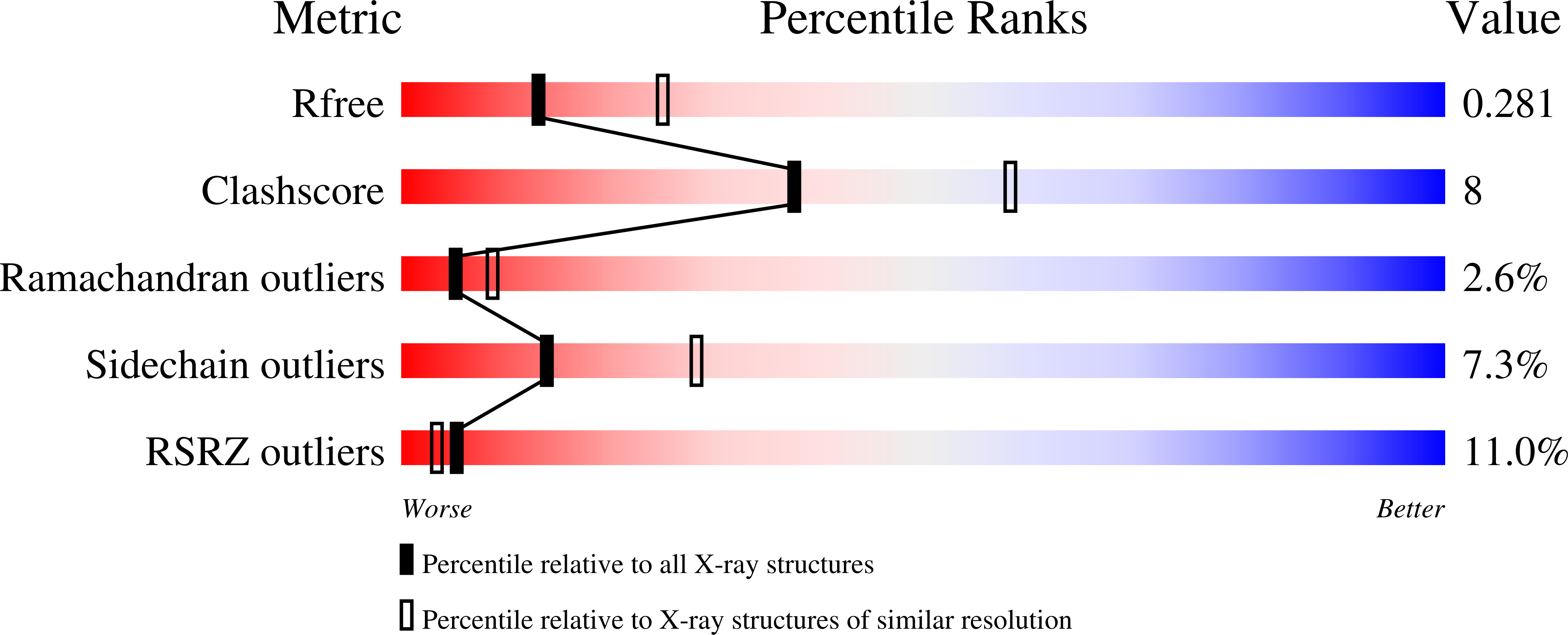The 2.6-angstrom structure of infectious bursal disease virus-derived t=1 particles reveals new stabilizing elements of the virus capsid.
Garriga, D., Querol-Audi, J., Abaitua, F., Saugar, I., Pous, J., Verdaguer, N., Caston, J.R., Rodriguez, J.F.(2006) J Virol 80: 6895-6905
- PubMed: 16809295
- DOI: https://doi.org/10.1128/JVI.00368-06
- Primary Citation of Related Structures:
2GSY - PubMed Abstract:
Infectious bursal disease virus (IBDV), a member of the Birnaviridae family, is a double-stranded RNA virus that causes a highly contagious disease in young chickens leading to significant economic losses in the poultry industry. The VP2 protein, the only structural component of the IBDV icosahedral capsid, spontaneously assembles into T=1 subviral particles (SVP) when individually expressed as a chimeric gene. We have determined the crystal structure of the T=1 SVP to 2.60 A resolution. Our results show that the 20 trimeric VP2 clusters forming the T=1 shell are further stabilized by calcium ions located at the threefold icosahedral axes. The structure also reveals a new unexpected domain swapping that mediates interactions between adjacent trimers: a short helical segment located close to the end of the long C-terminal arm of VP2 is projected toward the threefold axis of a neighboring VP2 trimer, leading to a complex network of interactions that increases the stability of the T=1 particles. Analysis of crystal packing shows that the exposed capsid residues, His253 and Thr284, determinants of IBDV virulence and the adaptation of the virus to grow in cell culture, are involved in particle-particle interactions.
Organizational Affiliation:
Institut de Biologia Molecular Barcelona, CSIC, Josep Samitier 1-5, 08028 Barcelona, Spain.















